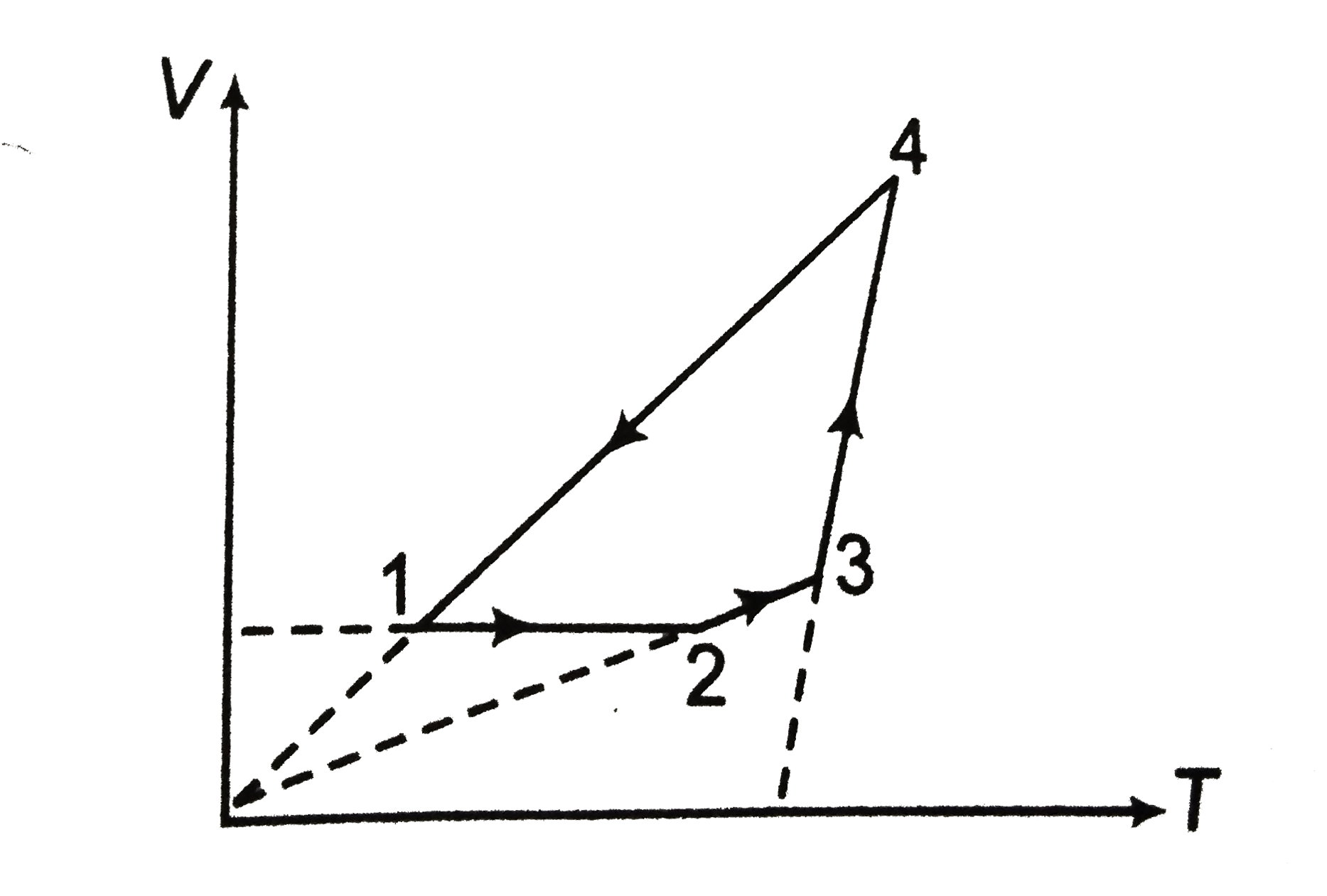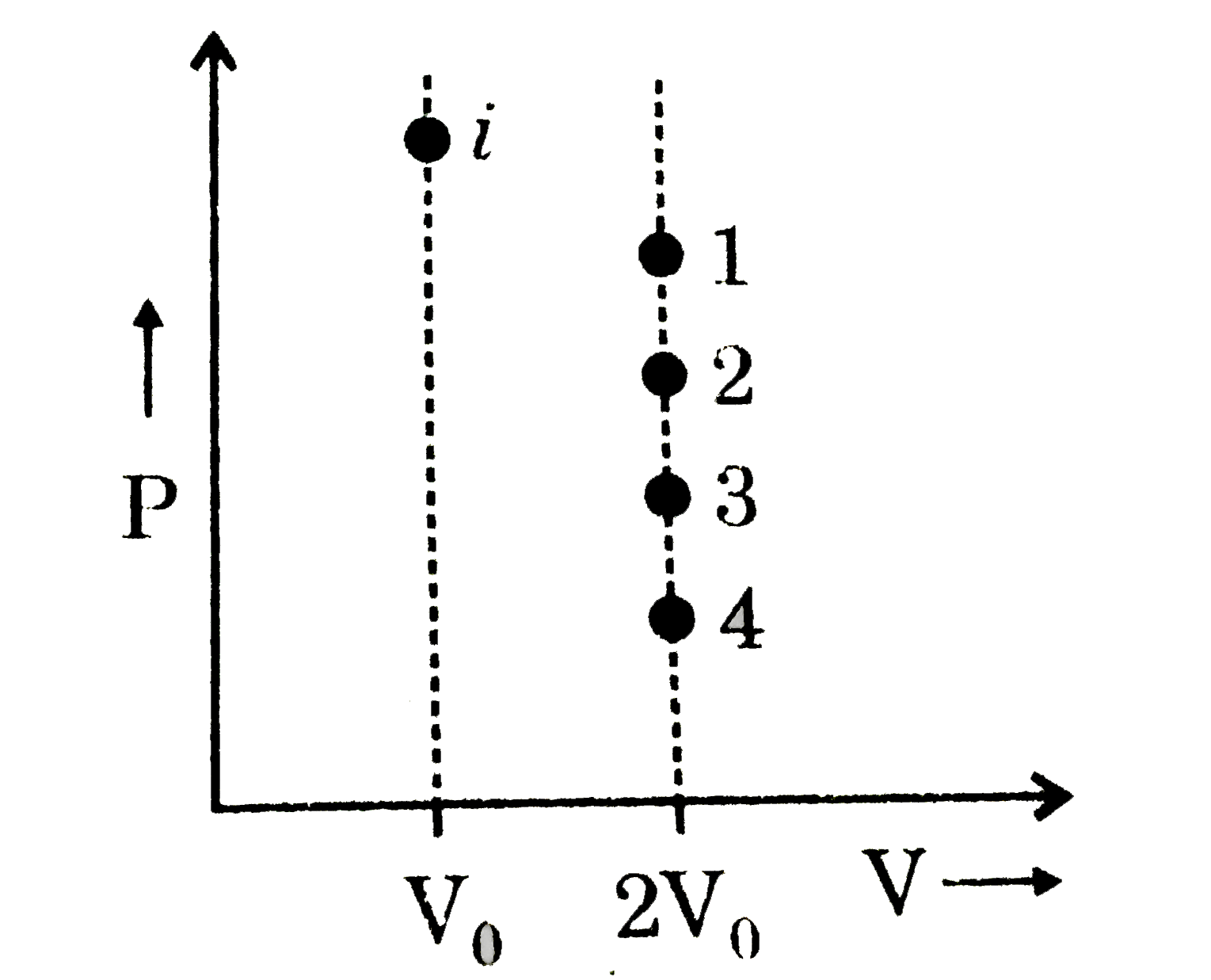Draw p-V diagram of irreversible process.
To draw the P-V diagram of an irreversible process, we will follow these steps:
1. Understand the Process:
- An irreversible process is one that cannot be reversed to return to its original state. In thermodynamics, an adiabatic process is often considered irreversible because it occurs rapidly and does not allow for heat exchange with the surroundings.
2. Identify the Equation:
- For an adiabatic process, the relationship between pressure (P) and volume (V) is given by the equation:
PVγ=constant
- Here, γ (gamma) is the heat capacity ratio (C_p/C_v).
3. Determine the Type of Graph:
- The P-V diagram for an adiabatic process is characterized by a hyperbolic curve. As volume decreases, pressure increases, and vice versa.
4. Draw the Axes:
- On a graph, label the vertical axis as Pressure (P) and the horizontal axis as Volume (V).
5. Sketch the Curve:
- Start from a point A on the P-axis and draw a curve that slopes downward to the right towards point B. This curve represents the adiabatic process.
- The curve should be steep, indicating that for a small change in volume, there is a significant change in pressure.
6. Label the Points:
- Mark the starting point as A (initial state) and the endpoint as B (final state) on the curve.
7. Comparison with Isothermal Process:
- Optionally, you can also sketch the isothermal process on the same graph for comparison. The isothermal curve will be less steep and will approach the axes more gently than the adiabatic curve.
Final P-V Diagram:
- The final diagram should show a steep curve from point A to point B, indicating the irreversible adiabatic process.
- An irreversible process is one that cannot be reversed to return to its original state. In thermodynamics, an adiabatic process is often considered irreversible because it occurs rapidly and does not allow for heat exchange with the surroundings.
- For an adiabatic process, the relationship between pressure (P) and volume (V) is given by the equation:
PVγ=constant
- Here, γ (gamma) is the heat capacity ratio (C_p/C_v).
- The P-V diagram for an adiabatic process is characterized by a hyperbolic curve. As volume decreases, pressure increases, and vice versa.
- On a graph, label the vertical axis as Pressure (P) and the horizontal axis as Volume (V).
- Start from a point A on the P-axis and draw a curve that slopes downward to the right towards point B. This curve represents the adiabatic process.
- The curve should be steep, indicating that for a small change in volume, there is a significant change in pressure.
- Mark the starting point as A (initial state) and the endpoint as B (final state) on the curve.
- Optionally, you can also sketch the isothermal process on the same graph for comparison. The isothermal curve will be less steep and will approach the axes more gently than the adiabatic curve.
- The final diagram should show a steep curve from point A to point B, indicating the irreversible adiabatic process.
Topper's Solved these Questions
- QUESTION BANK 2021BOOK - NAVNEET PUBLICATION - MAHARASHTRA BOARDCHAPTER - QUESTION BANK 2021EXERCISE - Thermodynamics ( Short Answer II (SA2) ( 3 MARKS Each ) )
13 Videos
- QUESTION BANK 2021BOOK - NAVNEET PUBLICATION - MAHARASHTRA BOARDCHAPTER - QUESTION BANK 2021EXERCISE - Thermodynamics (Long Answer ( LA) ( 4 marks Each) )
5 Videos
- QUESTION BANK 2021BOOK - NAVNEET PUBLICATION - MAHARASHTRA BOARDCHAPTER - QUESTION BANK 2021EXERCISE - Thermodynamics (Very Short Answer (VSA) ( 1 MARK Each ) )
12 Videos
- MULTIPLE CHOICE QUESTIONSBOOK - NAVNEET PUBLICATION - MAHARASHTRA BOARDCHAPTER - MULTIPLE CHOICE QUESTIONSEXERCISE - Communication Systems
6 Videos
- SHORT ANSWER QUESTIONSBOOK - NAVNEET PUBLICATION - MAHARASHTRA BOARDCHAPTER - SHORT ANSWER QUESTIONSEXERCISE - Assignments
3 Videos
Similar Questions
Knowledge Check
Irreversible process is
AAdiabatic processBJoule-Thomson expansionCIdeal isothermal processDNone of the aboveAll irreversible process are
ANon spontaneous processesBSpontaneous processesCIdeal processesDHypothetical processesAll irreversible processes are
Anon spontaneousBin equilibriumCisothermalDspontaneous
Which is an irreversible process?
View SolutionWhich is an irreversible processe ?
View SolutionA cyclic process 1-2-3-4-1 is depicted on V-T diagram. The p-T and p-V diagrams for this cyclic process are given below. Select the correct choices (more than one options is/are correct)

View SolutionStatement-1 : Work done in isothermal reversible process is more than irreversible process.
And
Statement-2 : Irreversible process is an infinitesimally slow process.
View SolutionA gaseous sample is generally allowed to do only expansion/compression type of work against its surroundings. The work done in case of an irreversible expansion ( in the intermediate stages of expansion/ compression the states of gases are not defined). The work done can be calculated using
dw=−PextdV
while in case of reversible process the work done can be calculated using
dw=-PdV where P is pressure of gas at some intermediate stages. Like for an isothermal reversible process, since
P=nRTV,so,
w=∫dw=−∫VfVinRTV.dV=−nRT In(VfVi)
Since,dw=PdV, so magnitude of work done can also be calculated by calculating the area under the PV curve of the reversible process in PV diagram.
If four identical samples of an ideal gas initially at similar state (P0,V0,T0) are allowed to expand to double their volumes by four different processes.

(P)By isothermal irreversible process
(Q) By reversible process having equation P2V= constant
(R) By reversible adiabatic process
(S)By irreversible adiabatic expansion against constant external pressure. Then in the graph shown the final state is represented by four different points then, the correct match can be :
View Solution
